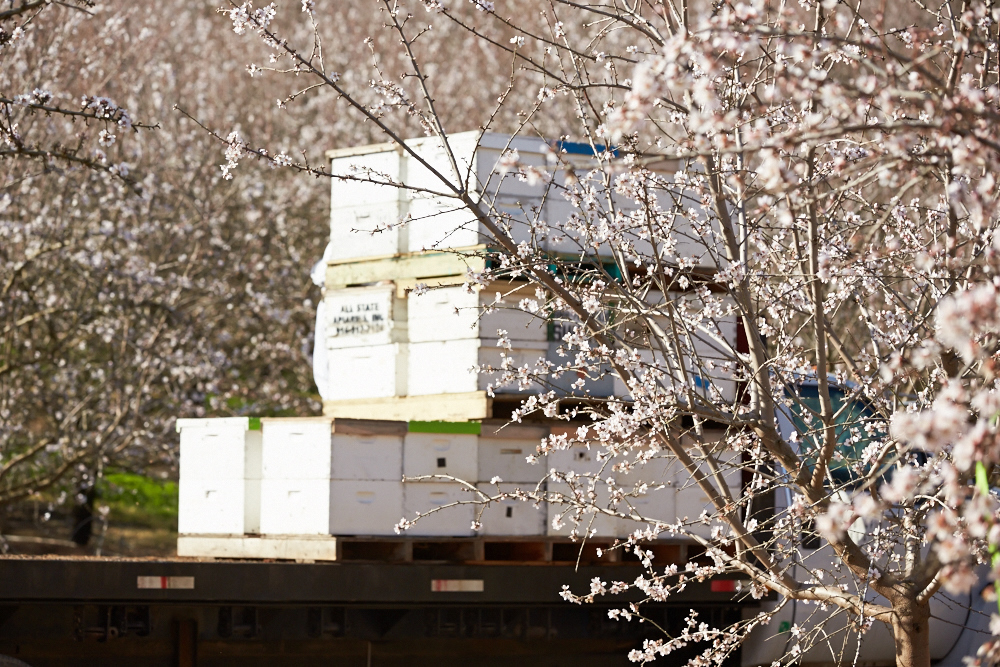Honey bees have done it again. With the help of growers and beekeepers working together to promote pollination despite challenging weather conditions, honey bees made their way out of their hives to get to work. And now, with crop progress reports showing most varieties are at or past petal fall, it’s time to remove hives from the orchard. 
Prompt hive removal is one of the Almond Board of California’s “Honey Bee Best Management Practices (BMPs)” and plays an important role in ensuring almond orchards remain a good and safe place for honey bees.
As pollination activity in almond orchards dies down, bees may forage outside the orchard — up to four miles away — and seek alternate food and water sources. With the extended travel, bees have a higher risk of coming into contact with insecticide-treated crops. That’s why the University of California and the Almond Board recommend hive removal when 90% of the flowers on the latest blooming variety are at petal fall.
In addition to the timing of removal, the Honey Bee BMPs recommend that growers and beekeepers discuss expectations for hive removal in the development of pollination agreements before pollination season. By doing this, the grower and beekeeper develop clear responsibilities and can avoid misunderstandings.
Observe honey bee activity
On the hive’s way out of the orchard, it’s also important for growers and beekeepers to reflect on honey bee activity throughout the pollination season.
If they observe excessive numbers of dead and dying adult bees in front of hives, dead brood (immature developing bees) and/or dead newly emerged workers at hive entrances, or a lack of foraging bees or lethargic foragers under conditions in which they would normally be active, a report should be filed with the local county agricultural commissioner’s office, as this may indicate a pesticide-related incident.
Bee health concerns cannot be addressed without the data from these incidents.
For more detailed guidelines on hive removal and reporting suspected bee health incidents, check out the BMP guide and related Honey Bee BMP materials.